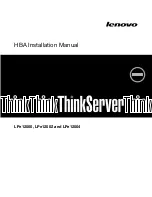
The Infrared Wireless Expert
ACT-IR8250P
Specification
6) In this IR-link set-up, your embedded host IR82x0PMB is IrDA secondary
station, and PDA/cellphone is IrDA primary station. IrDA primary station initiates,
commands and establishes IrDA connection.
C. Definition of Jumpers and LEDs:
1) LED D8: When it lights up, means DTE (host) enables its RTS. When host
UART buffer is going to be full, host should disable this signal line.
2) LED D10: When it flashes, means DTE (host) is sending data.
3) LED D12: When it lights up, means DTE (host) enables its DTR. Enabling DTR
means host is ready and orders IR8250P to enter ready-to-receive mode.
4) LED D1: When it lights up, means IR8250P enables its DSR. D1 lights off
means that IR link is not yet established.
5) LED D3: When it flashes, means IR8250P is receiving data from another
IrDA device and sends these data to host device.
6) LED D5: When it lights up, means IR8250P enables its CTS. D5 lights off means
IR8250P is not allowed to receive any data from host device (e.g. buffer full, etc.).
7) J3 and J5: If your host just supports 3 wire UART (Tx, Rx, GND), you probably have
to set DTR and RTS always enabled, i.e. set IR8250P in no-flow-control status.
To accomplish this, either: a) Pin 2-3 shorted so DTR/RTS are always enabled, or
b) Pin 1-2 shorted so host takes control of when DTR/RTS are enabled or disabled.
8) J4:
Reserved.
9) J10: Power jumper, short it to apply external non-regulated power to IR8250P.
You should NOT short J10 if you choose to us J11 below.
10) J11: 3VDC regulated power (e.g. battery) input connector traces. You may
use this location to place your own 3VDC connector if you don’t have available
external non-regulated power to connect to J10. J11 MUST NOT be shorted.
D. Please refer to the software “ACT-IR8250SW” user’s manual for detail features
about ACT-IR8250PEK.
© Copyright 2003-2005 ACTiSYS Corp. Page 25 of 25
Jan 28, 2005
Rev. 0.44

































